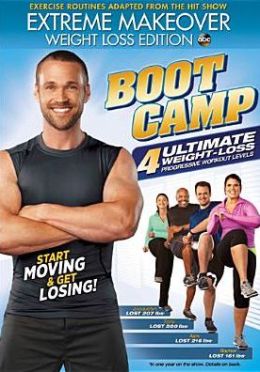Wanting v. Needing Food?
Weight loss requires deep change in order to become “permanent.”
Seeing the number on the scale go down is exhilarating and gratifying, but the mental and emotional conditioning that caused the weight gain must be changed as well. Otherwise, old habits have a tendency to resurface and the number on the scale rises again.
One of the most important distinctions to discover is the difference between physical hunger and physical desire.
Having these two conditions confused is not unusual. Most of us have a hard time making the distinction.
Physical hunger is true body hunger, felt in the stomach (or occasionally as light-headedness). It occurs only after quite a while has passed since eating.
Physical desire is a yearning produced by mental stimulus (seeing available food, negative thinking patterns, etc.), emotional need (the urge to block intense emotions like anger and frustration, mask discomfort as when embarassed, or fill space when bored or feeling lonely). Often there is a deep and intense need for food when feeling spiritually adrift.
Physical desire is felt in the upper chest and head. It’s wanting food when there is no hunger present. The mind may label it “hunger” – in fact, we often intensify the need for food during these moments of desire by claiming “I am starving” or “I’ve got to eat something!” – but it is just the mind talking!
If that intensity shows up, it makes it even easier to know that physical desire is present, not real hunger. After years of battling these intense desires, it’s quite common to lose track of what real hunger feels like.
But, if you are driven to eat, if you feel a force moving you to leave your desk, get to the kitchen, or even to jump in your car to get food, you are probably experiencing physical desire.
Physical hunger can actually wait.
Yes, if it’s true hunger, you probably feel you can eat in 10 or 15 minutes with no problems. Real hunger rarely brings up an emotional state intense enough to get you moving at that very moment.
How to Work with Physical Hunger
If you’ve developed a diet mentality based on efforts to lose weight through highly restrictive diets, you may have the cues and responses backwards. If physical hunger is present, you should eat. Never attempt to avoid food. Your body is communicating a need to you. Pretending you are not hungry or attempting to invoke “willpower” fight the urge to eat will only backfire, causing binging.
In fact, if everyone ate only when physical hunger appeared in their bodies, no one would be overweight!
You might want to make good choices when hunger appears: choose foods low in white flours, sugar, saturated fats, chemicals and processing, and high in protein, complex carbohydrate and “good” fats.
Be aware of hunger levels as they subside when you eat. Be sure to stop eating before you feel full in any way.
How to Work with Physical Desire
Once you realize you’re experiencing physical desire, reframe it immediately as a situation that does not call for food.
Determine the source of the desire.
Are you under pressure or stress?
What are your current emotions?
What recent occurrences might have caused the desire for food?
What are you hoping the food will do for you? (Will it, for example, take your mind off your problems? Will it soothe you? Will it make you feel guilty, which is a more familiar, more acceptable emotion than what you’re feeling?)
Process the source of the desire.
If emotional, try to write/journal about it or express the emotions you are feeling to someone.
If stress is present, how can you offset or renegotiate the situation that’s causing stress? Creating a new set of deadlines is easier in the long run than gobbling that jelly filled donut.
If you need soothing, what will provide that? In some situations, a cup of tea might be helpful; at other times you may need to talk with an understanding friend.
Never underestimate the power of delaying tactics. It’s funny that we find it acceptable to procrastinate healthy eating for years, but we never think to use that skill on everyday urges to eat when we’re not hungry.
Conclusion
Learning to discern the difference between physical hunger and physical desire puts you in a powerful position. Developing ways to cope with these two states in appropriate ways gives you confidence you can handle any situation in life. Handling the two states in a consistent manner over a prolonged period of time results in weight loss that is permanent because it is based on deep behavioral change.
Pat Barone, CPCC, PCC, earned her title “America’s Weight Loss Catalyst” by coaching thousands of clients toward permanent weight loss. Her status as an expert is heightened by her own personal weight loss success. Receive her free newsletter “The Catalyst” by visiting
patbarone.com
today!
-
The Unappetising Reality About Single Food Diet Plans & Weight Loss
There are many Diet Plans and Weight Loss supplements and the like out
-
Importance of Cardio Workouts
Getting plenty of cardio in your workouts is important to keeping y
-
Learn the Weight Loss Secrets of Colon Cleanse and Enjoy a Healthier Life
Today, the need for weight loss is the b
-
Lose Weight Tips - Lose Weight Easy by Adjusting Your Food Portion Size
By now, it is probably no surprise to an
-
Breakfast Sandwiches and Your Diet
Fast food is constantly being marketed as a delicious, quick an
-
Why Your Idea of a Beautiful Body is Fake
Most of us go on this endless search for ways to look younger,
- DON'T MISS
- How Coffee Interferes With Losing Weight
- Healthy And Quick Weight Loss - Low Carb Diets
- The Cost Of Gastric Bypass Surgery
- Liberate Your Set Esteem And Lose Weight
- Im trying to lose weight. Could protein shakes help?
- Worried About Gaining Weight Over The Holidays
- Diet Meals Delivered: One Choice To Assist With New Year Weight Loss
- Latin American Destinations: Focus on Obesity and Bariatric Surgeries
- What To Do When Weight Loss Is Just Too Hard
- Start the Never Ending Journey to Losing Weight




